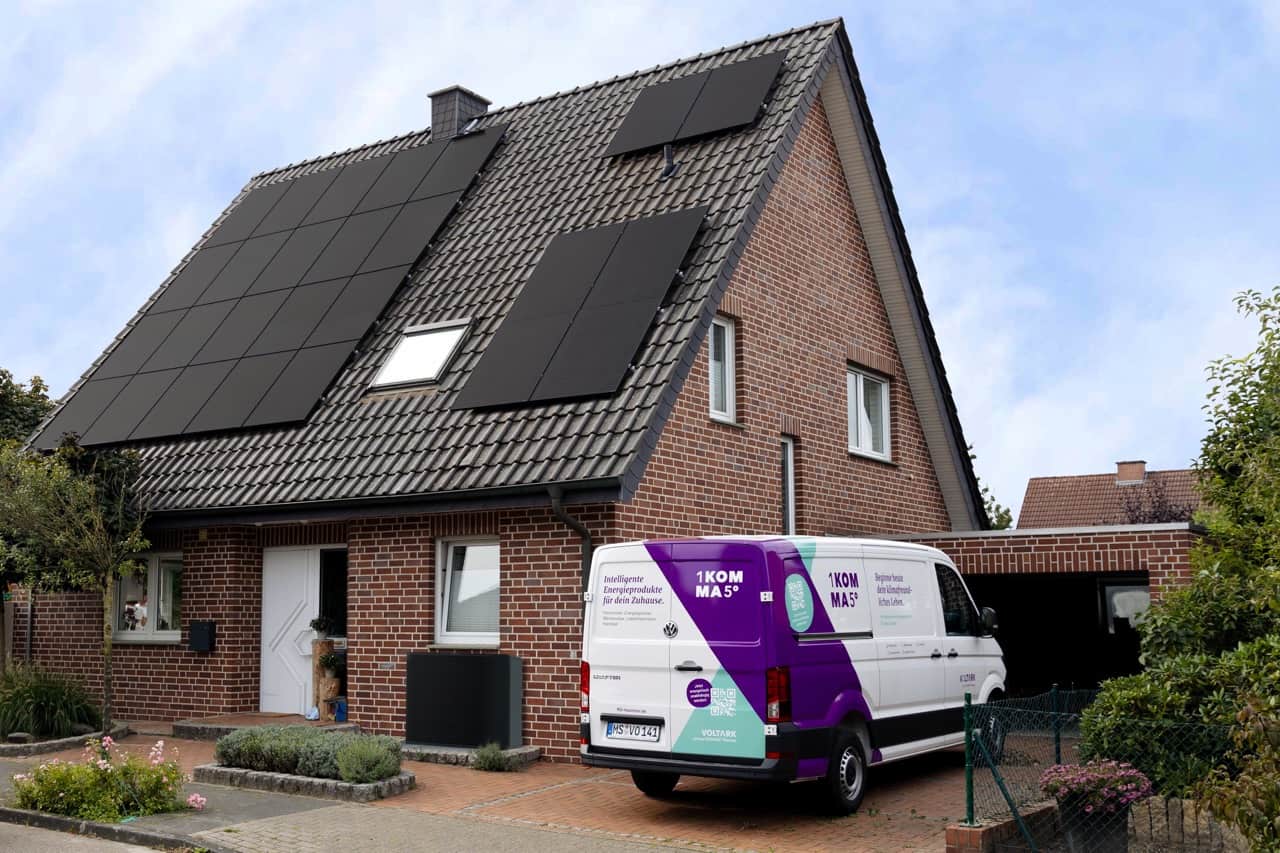
Achieving an Energy-Efficient Home with Solar Heat Pumps
Although traditional electric heaters seem like a straightforward solution, their high operating costs can become a significant burden over time. Solar heat pumps, on the other hand, offer an eco-friendly alternative that leverages solar power to keep your home comfortable year-round.
Still wondering if a solar heat pump is a fancy upgrade or a wise long-term investment? Let us cover some common questions about it and see if they could be the game-changer your home needs.
Key Takeaways:
Efficient Heating and Cooling System: Solar heat pumps are an eco-friendly, energy-efficient solution that utilises solar power to heat and cool your home year-round.
Sustainability and Lower Environmental Impact: Modern solar heat pumps use eco-friendly refrigerants with lower Global Warming Potential (GWP). They are a sustainable and environmentally responsible choice for homeowners looking to reduce their carbon footprint.
Cost-Effective in the Long Run: The initial cost of installing solar heat pumps may be higher than traditional electric heaters, but their operating cost is significantly cheaper.
Scalable and Flexible Systems: This system is flexible enough to be scaled up or added to over time, making it an adaptable solution as your energy needs grow or change.
What is a Heat Pump?
A heat pump is a device that moves heat from one place to another to heat or cool your home. It works like a reverse air conditioner. Rather than generating heat, a heat pump transfers it from outside to inside (or vice versa), making it an energy-efficient option for heating and cooling.
There are different types of heat pumps. Each is suited for specific needs:
Air to Air
These are the most common types of heat pumps. They work by moving heat from the outside air into your home to warm it up or removing heat inside your home to cool it down. Think of them as similar to air conditioners, but they also provide heat during colder months. The system uses a refrigerant that absorbs and releases heat as it moves between the outdoor and indoor units.
Recent advancements in refrigerant technology have led to the development of more eco-friendly options. Modern heat pumps typically use refrigerants like R-32 and R-290 (propane), which have a much lower Global Warming Potential (GWP) than older refrigerants like R-410A. This innovation means they are a more sustainable choice for your home.
Imagine you are in the middle of a cold winter morning. Your home feels chilly, but instead of firing up a power-hungry electric heater. You turn on your air-to-air heat pump. It draws in the outside air, warms it, and distributes it throughout your living room.
Fast forward to summer, and the same system will cool your home by pulling heat from the indoor air and releasing it outside, keeping your home comfortable all year round. It is perfect for homeowners looking for an all-in-one system that heats and cools their homes.
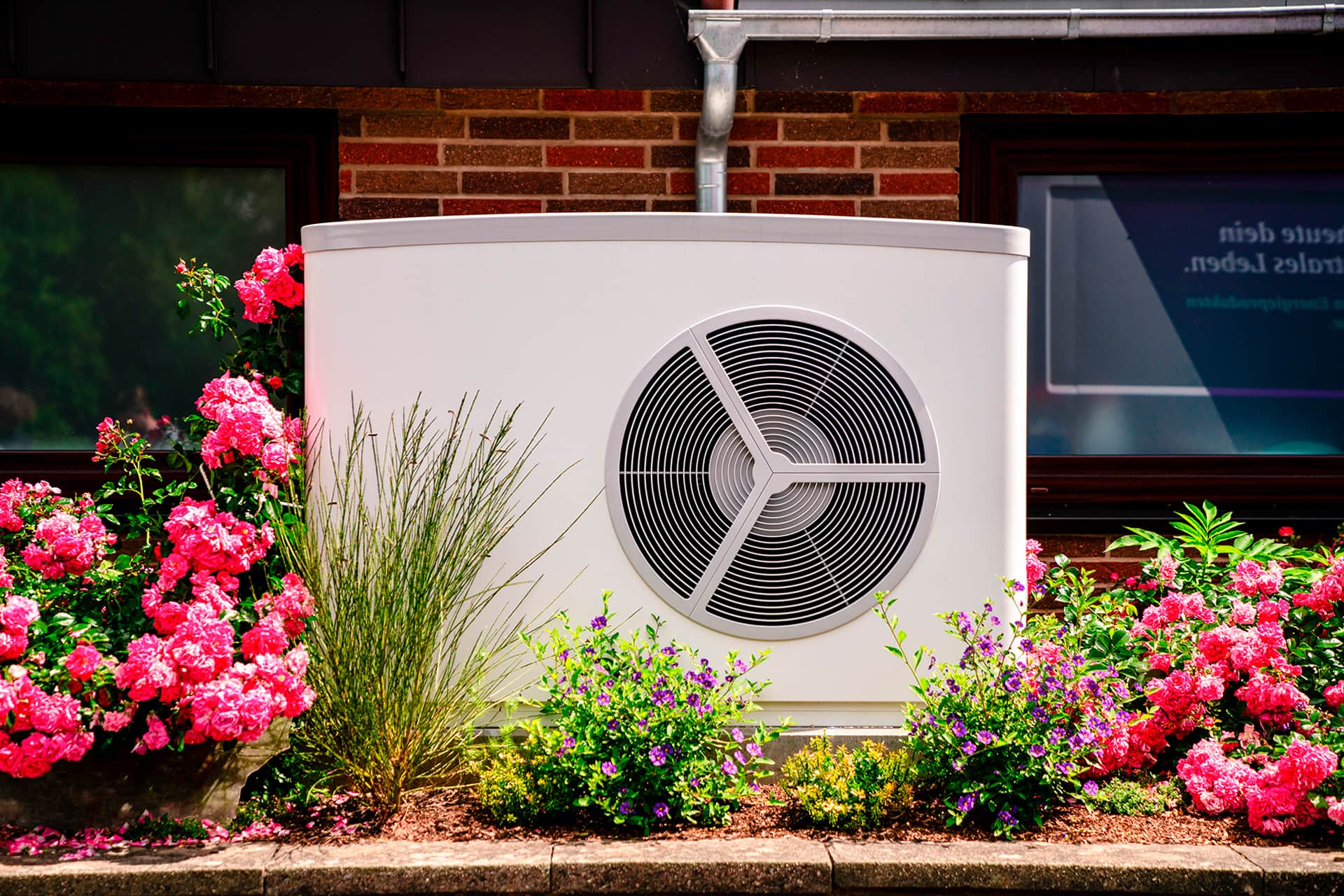

Air to Water
An air-to-water heat pump works similarly but transfers heat from the air to water. However, instead of circulating warm air inside, it heats water. Then, it provides space heating (through radiators or underfloor heating) and hot water for taps and showers.
Picture a chilly evening when your air-to-water heat pump is working hard. It draws in outdoor air, warms it, and heats water that flows through your home’s underfloor heating system or radiators. Your living spaces stay cozy, and hot water is always available whenever you need a relaxing shower or bath.
With this setup, your home stays efficiently heated, and you have a constant supply of hot water— all powered by the same system. Air-to-water heat pumps are ideal for households that combine home heating with a hot water supply in a single, efficient solution.
Other Types of Heat Pumps
There are a few other less common types:
Ground Source uses the earth's stable temperature to deliver efficient heating and cooling for your home.
Water Source uses the temperature of nearby water sources, like lakes or rivers, to transfer heat.
These types are typically more complex and unusual in residential Australian homes.
Why Combine Solar Power with Heat Pumps?
Heat pumps are far more energy-efficient than traditional electric or gas heating systems, but they still need electricity to run. If you already have solar panels, you can use the energy they produce to power your heat pump, significantly cutting down your operating costs. This is especially advantageous in areas with high electricity prices.
Since heating and cooling make up around 40% of a household’s energy consumption, using solar energy to run your heat pump can greatly reduce your reliance on the grid and increase your overall energy savings.
How Does Solar Panel Work with Heat Pumps?
Solar panels supply power to heat pumps like they power other appliances in your home. The magic happens in how they complement each other for maximum efficiency. Imagine you have a hot water heat pump. During the day, your solar panels convert sunlight into electricity to run your heat pump. Instead of drawing power from the grid, your system uses clean, renewable energy to meet your heating needs.
Here is how it works:
When your hot water heat pump runs, it extracts heat from the air and transfers it to the water in your hot water system. On sunny days, your solar panels generate enough electricity for your appliances, like your fridge, washing machine, and air conditioning system.
Even on cloudy days or during high-demand periods, any excess energy stored in a battery can step in to power your heat pump. If your solar system doesn’t have batteries, it can switch to the grid as a backup to keep everything running smoothly.
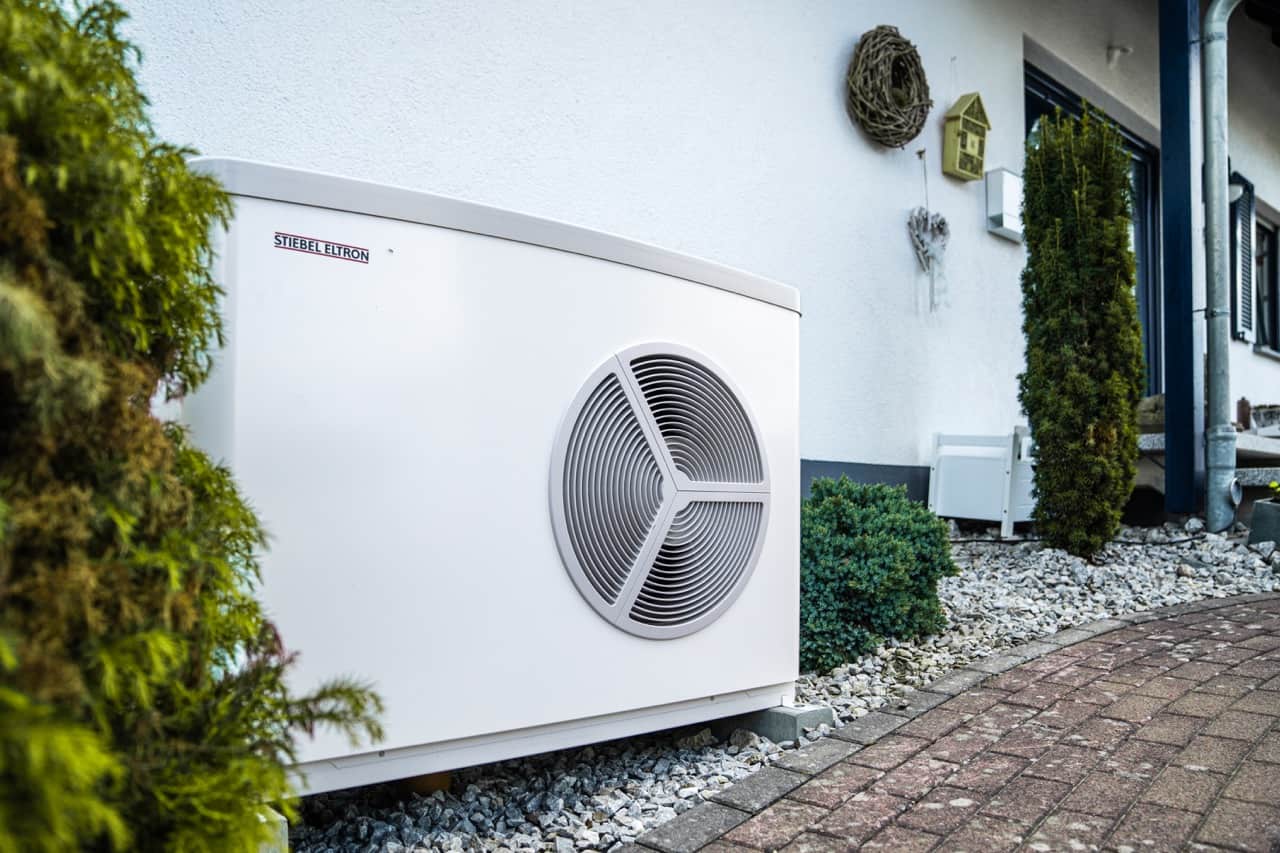
Solar Heat Pumps vs. Traditional Heating and Cooling Systems
The main difference between solar heat pumps and traditional heating and cooling systems is their energy source and efficiency. Conventional systems like gas heaters and electric air conditioners rely on fossil fuels and consume loads of energy. These systems likely contribute to high energy bills and carbon emissions, while electric systems pull heavily from the grid, further driving up costs.
In comparison, an electric air conditioner can cost you $1.50-$2.50 per hour to operate, depending on its efficiency and the electricity rate in your area. With Australia’s electricity costs averaging 25 to 45 cents per kWh, depending on the region and tariff plan, this can add up quickly.
On the other hand, a heat pump, primarily running on solar energy, could cost as little as 30-50 cents per hour, especially during sunny days when your system is powered mostly by the sun.


Let us look at another angle on how traditional cooling and heating systems differ from solar heat pumps:
Versatility: Most traditional setups require separate systems for heating, cooling, and hot water, which not only increases upfront costs but also complicates maintenance. A solar heat pump, however, offers an all-in-one solution. They are capable of handling heating, cooling, and even hot water needs. This streamlined approach simplifies home energy management while saving on installation and maintenance expenses.
Durability and Maintenance: Traditional systems often require frequent servicing. Gas heaters need regular checkups for safety and efficiency, and air conditioners may incur costly repairs over time. Meanwhile, solar heat pumps are designed for longevity and minimal upkeep. This system experiences less strain and wear with the added benefit of being powered by solar panels.
Benefits of Solar Heat Pumps in Australian Homes
Heat pumps are known for their efficiency, but they still rely on electricity to run. Pairing a heat pump with solar power allows homeowners to draw on free energy from the sun.
Having a system that provides comfort throughout the year without causing a spike in your energy bills is the dream. A solar heat pump system makes it possible to heat and cool your home sustainably using the power you generate. It’s an eco-friendly way to achieve comfortable living that doesn’t come with hefty energy costs.
Switching to a solar heat pump means comfort and savings can go hand in hand. It’s a choice that aligns with financial and environmental goals, making it ideal for modern, sustainable Australian homes.
How Solar Heat Pumps Work to Save You Money?

Efficient Heat Transfer
Unlike traditional heating systems that generate heat by burning fuel or consuming large amounts of electricity, heat pumps work by transferring heat. They draw heat from the air or ground outside your home and pump it inside, or vice versa, depending on whether you need heating or cooling.
This process is much more energy-efficient and requires only a small amount of electricity to move heat rather than generating it from scratch. A heat pump can use up to 50% less electricity than conventional systems like electric heaters or air conditioners.
Solar-Powered Operation
The real game-changer happens when you pair a heat pump with a solar panels. During the day, when sunlight is abundant, your solar system can power the heat pump directly. It drastically reduces your utility bills, especially during peak energy usage times when electricity prices tend to spike. On average, households with solar panels can reduce their energy costs by 50-70%, depending on their consumption and system size.
Considerations Before Installing a Solar Heat Pump in Your Home
Switching to a solar-powered heat pump can offer incredible benefits. We need to assess these factors to reap all these benefits:
Sizing Your Solar Panel Array for Optimal Heat Pump Performance
The size of your solar panel system should be adequate to power your heat pump efficiently. Typically, a heat pump for a household will require a solar array with a higher energy output than a standard home solar system. Consulting a professional for a customised recommendation based on your home’s size and climate will help you generate enough power to run the heat pump consistently.
Consider Installing A Solar Battery
A solar heat pump system performs best with a steady energy supply, which solar batteries can provide. Adding a battery to your system means you can store excess energy produced during sunny days and use it to run the heat pump when sunlight is lower. Your heat pump can work efficiently throughout the day and night, offering true off-grid comfort.
Assessing the Heating and Cooling Demands of Your Home
The effectiveness of a solar heat pump system can depend on your household’s heating and cooling requirements. Homes in warmer climates may need more cooling power, while homes in cooler climates might rely more heavily on heating. Knowing your energy demands can help tailor the solar panel and heat pump setup to fit your home needs.
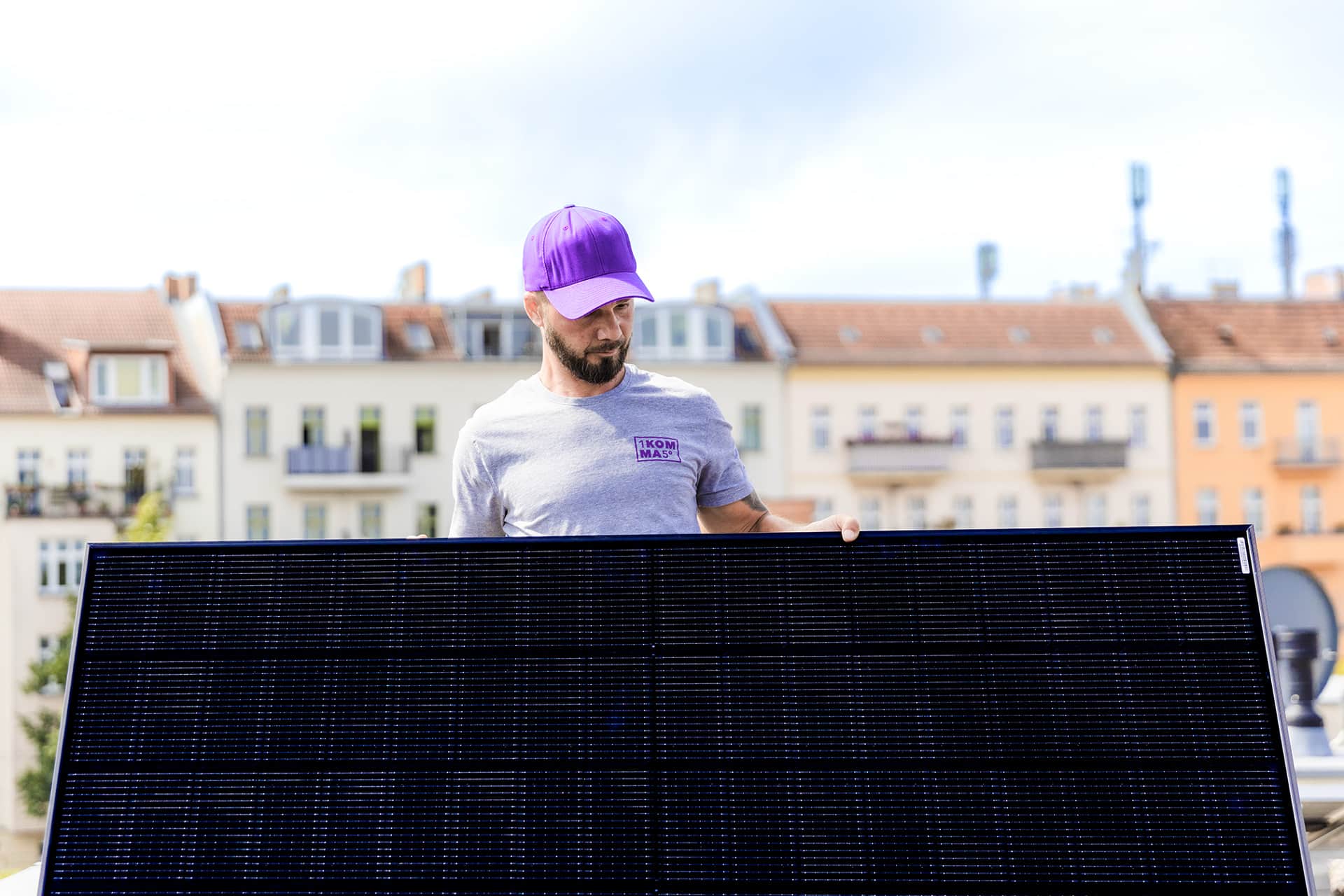
Are Solar Heat Pumps Effective in Extreme Weather Conditions?
Australia’s diverse climate—from the scorching heat of central regions to the chilly winters of the Snowy Mountains or Tasmania—can raise concerns about system performance. But rest assured, modern solar heat pumps are built to handle these extremes.
For example, heat pumps from brands like Stiebel Eltron are designed to operate in temperatures ranging from -7°C to +42°C. On especially cold days or when hot water demand is unusually high, a heat pump booster can step in to maintain comfort and performance.
Boosters kick in when the temperature drops too low or if additional heating is required. Some heat pumps include this feature, while others offer it as an optional upgrade—ensuring you’ll always have hot water, even in winter.
Is It Better to Install a Heat Pump or Solar Panels First?
If you're starting fresh, assess how much energy your household uses daily. Installing solar panels requires sizing the system to match your consumption. This part is where planning becomes key. Collaborating closely with your solar installer is essential for planning the most suitable system for your home.
If you already have a heat pump installed, your solar installer can factor its energy use into your solar system design. This ensures you generate enough solar energy to support your heating needs. It’s also a great time to explore any available rebates or incentives, which can help offset the initial costs.
Adding a solar battery can increase your energy independence by storing excess solar energy for use when the sun isn’t shining.
Not ready for solar yet? A heat pump on its own is still a more efficient alternative to traditional systems, and integrating solar later is a seamless process. It’s a flexible solution that adapts to your evolving energy needs.
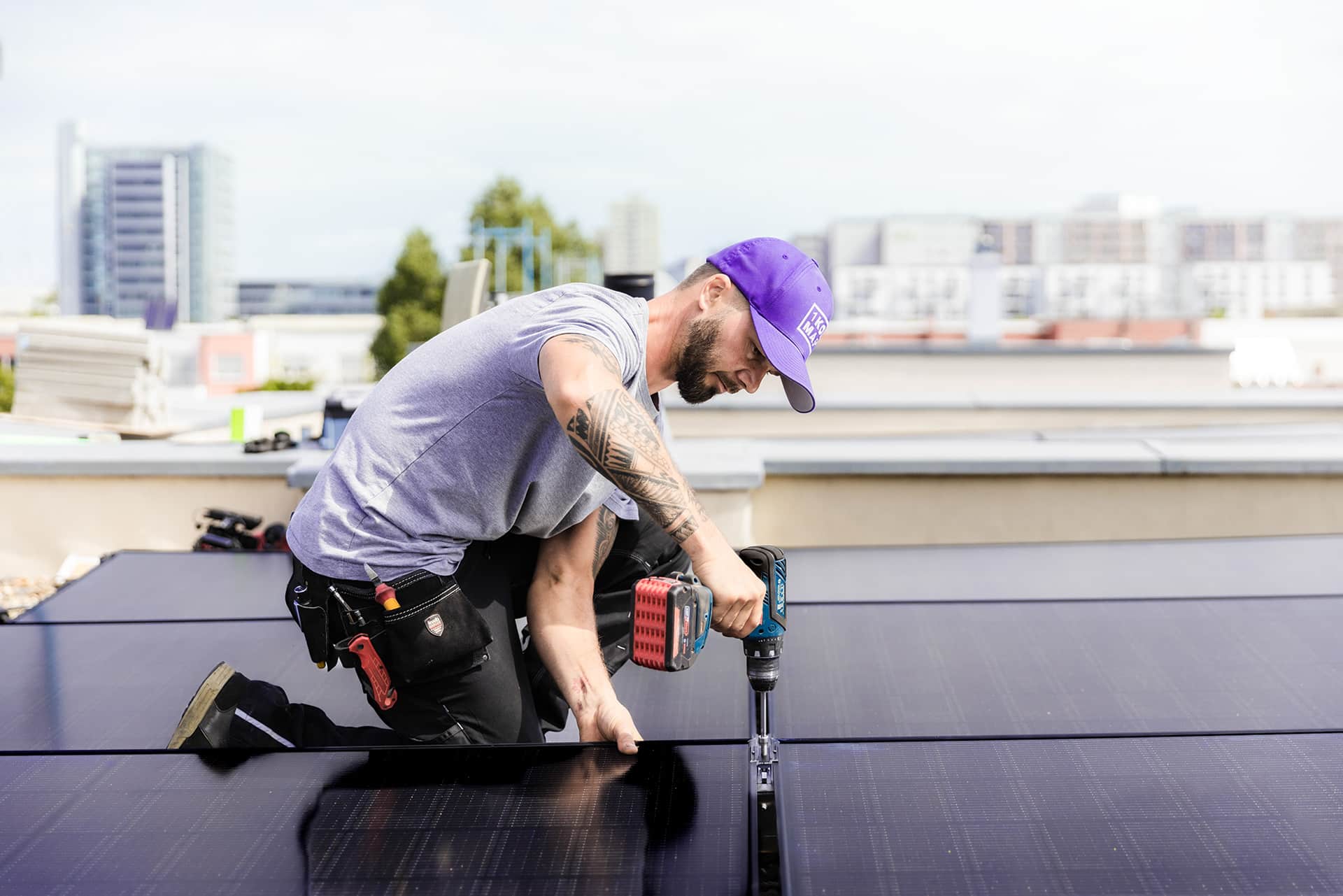
How Much Do Solar Heat Pumps Cost in Australia?
The cost of installing a solar heat pump in Australia depends on several factors, including the type of heat pump, the size of the solar panel system, and your home's specific energy requirements.
If you are eyeing a premium hot water heat pump brand like Stiebel Eltron, the costs can range from $5,000 to $7,500. The price depends on the specific model and system requirements. This range includes both the cost of the unit and installation.
Standard residential solar panel installation in Australia (around 6.6 kW) can cost around $5,000 to $9,000. The price depends on the brand and quality of panels and inverters. Aside from that, these factors continue to influence costs:
Rebates and Incentives: Australian solar rebates can significantly lower the upfront cost of your solar installation. Be sure to check state and federal government incentives for solar energy systems.
System Size and Capacity: The size of the solar and heat pump system depends on your household's hot water and heating needs. Comprehensive setups typically cost more due to higher capacity units and the additional materials needed for installation.
Installation Complexity: The layout of your home and accessibility to the installation site can affect labour costs. For example, retrofitting a heat pump into an existing system might cost more than installing one in a new build.
How to Find a Good Solar Heat Pump Installer in Australia?
Finding the right solar installer begins with understanding your options and what to look for. Installing a solar heat pump requires plumbing and electrical skills. Choose a certified installer who has a good track record with these systems. They should offer comprehensive consultations and transparent pricing.
By asking the right questions and evaluating your options, you're already on the path to making an informed decision.
1KOMMA5° could be your starting point. We believe in empowering Australian homeowners to take control of their energy choices. With the right combination of solar panels and heat pumps, you can create a system that suits your unique needs and future goals.

1KOMMA5° Blog
Need more information?
Head over to the 1KOMMA5° blog for more helpful tips and other important guides on everything solar, from inverters, panels and batteries to how to make the most of your investment for years to come.
Frequently Asked Questions about Installing Solar Power
Are there any rebates available?
There are great government rebates/incentives still in place for eligible households. Basically, the larger the panel array, the more STCs your solar system generates as it is based on the expected output of the system over time.
When you buy a solar system, the purchase price is normally reduced by the value of the STCs created by your system. You simply fill out a form on the day of installation to confirm that the system has been installed, and that’s it. There is no additional paperwork that you need to do.
Small-scale Technology Certificates (STCs)
Small-scale Technology Certificates (STC’s) – previously known as Renewable Energy Certificates or RECS – are created when a Renewable Energy System such as a Solar PV system is installed.
The number of STC’s depends on the predicted amount of energy generated and hence the larger the system the greater the rebate. In essence, one STC is created for every megawatt-hour of production capacity of the system.
This is further multiplied by the number of years the system is likely to generate energy (for home solar systems, this is usually 15 years, although the life of the solar panels themselves is considerably more than that).
This incentive program is being phased out until 2030, so each year the number of certificates your system is eligible for reduces.
STC Price
The system for trading and pricing STCs for small systems is managed by the Small-scale Renewable Energy Scheme (SRES).
STCs are bought by Liable Parties (usually electricity retailers) and must be surrendered at the end of each quarter. As the number of STCs that are required to be surrendered is a fixed amount each year, but the number of STCs created is variable, the price paid for STCs also varies and is determined by supply and demand.
The Federal Government legislated in 2010 a fixed price for STCs by implementing a Clearing House system where STCs can be bought and sold for $40. However, there is no requirement for Liable Parties to purchase from the Clearing House, so they are likely to only do so if there is a shortage of STCs or the market price exceeds $40. There is currently a surplus of STCs in the market which means the market price of STC’s below $40
How does the feed-in tariff work?
The Feed In Tariff is only something you need to worry about if you don’t have battery storage.
The price your chosen energy retailer pays for any excess electricity generated from your solar panels is recorded as a credit on your power bill.
In NSW, solar power is fed into your home as it is generated and your household will use it first before you draw power from the grid.
This means that for every kWh of solar power used in the home you are directly saving money you’d spend on your power bill. This reduction in your power bill is the main financial benefit of solar power.
Everything else will be bought up at an agreed rate by your electricity retailer.
At the moment, most feed-in tariffs are between 5 and 10 cents per kWh, with many being about 7 cents. They bounce up and down a lot, for example in previous years they have been up over 20 cents per kWh. Typically, they are always at least 5 cents per kWh.
What happens once I sign the paperwork?
Once you sign up for a 1KOMMA5° Installation, we immediately submit your grid application to the relevant energy distributor. For systems up to 5kWs, this is a formality. For larger systems it can take a few days or more. Once we receive approval, your installation will be managed by our installation coordinator, who will welcome you to 1KOMMA5° and book an installation date for you. This is generally booked within around two weeks and installation dates are available Monday to Friday, weather permitting.
We endeavour to have your system installed within 2-4 weeks unless you request us to hold for whatever reason. Due to our strict safety policy, we do not install solar systems when it rains. In the event of inclement weather, we will rebook your installation as soon as possible. We always work with your requests as we strongly recommend that someone be home on the day of installation.
Do you offer finance?
Green Loans can be an affordable way to pay for your solar power system and is only available for approved products. As a Clean Energy Council Accredited installer, all our systems qualify.
Green Loans can be used to finance 1KOMMA5° systems from $1,000 to $30,000 over a 2-7 year term. Once you have received a referral from 1KOMMA5°, online approval usually occurs within 1-2 business days. Green Loans have a competitive fixed interest rate that is as low as 7.99% p.a.* | Comparison rate 9.21% p.a.^ Establishment fee of $299 added to the loan amount. $2.70 per week account keeping fee included in repayments.
To be eligible to apply you must:
Be over 18 years old and an Australian resident or citizen
Own or be purchasing a home
Be employed, self-employed, a self-funded retiree; or is receiving the Government Age Pension
Have an Australian driver’s license or Passport
Provide two most recent payslips or 90 days of bank statements
There are a number of good, competitive Green Loan providers – ask us about the options available.
More Helpful Articles:

1KOMMA5° Blog
Need more information?
Head over to the 1KOMMA5° blog for more helpful tips and other important guides on everything solar, from inverters, panels and batteries to how to make the most of your investment for years to come.